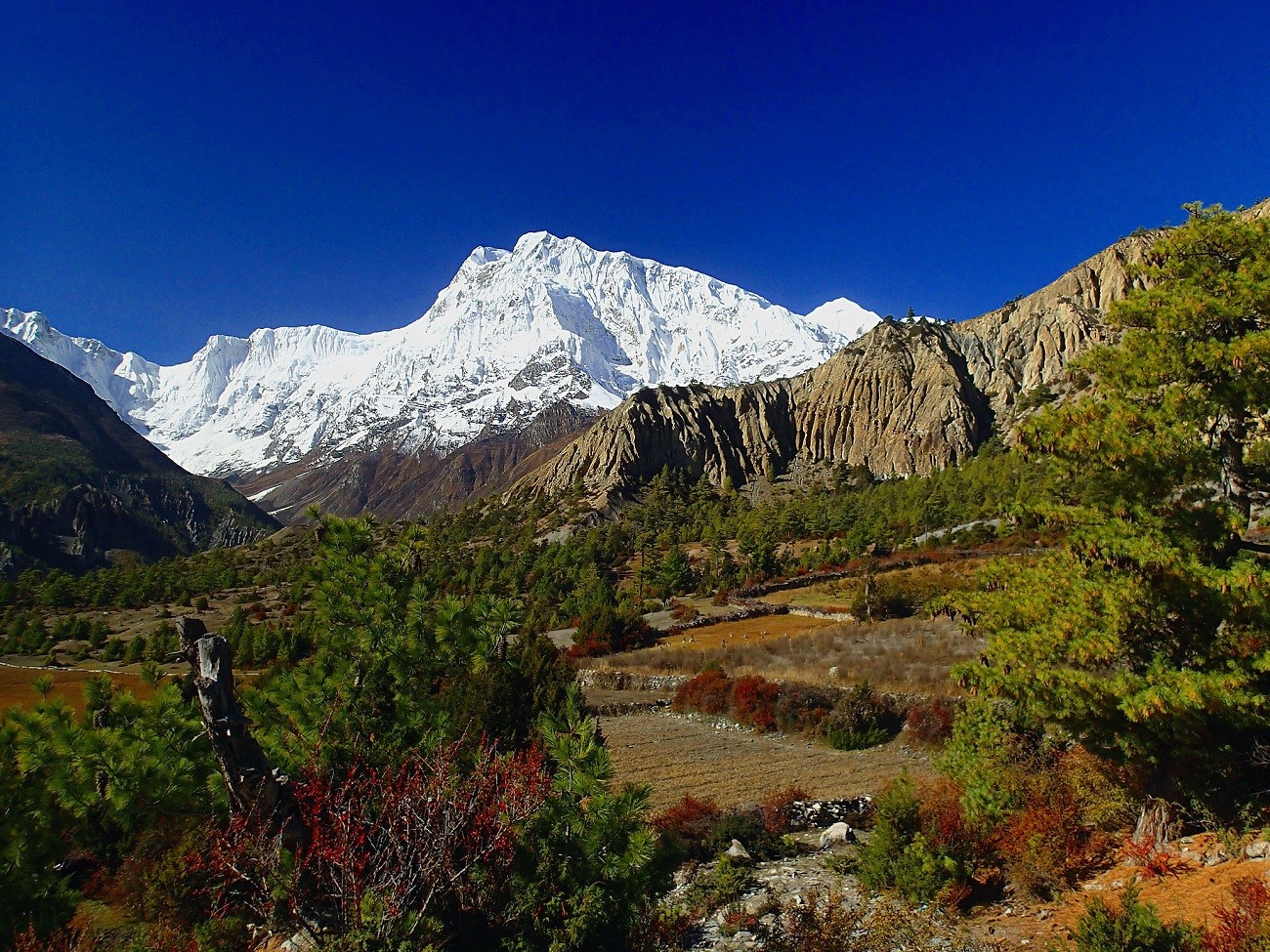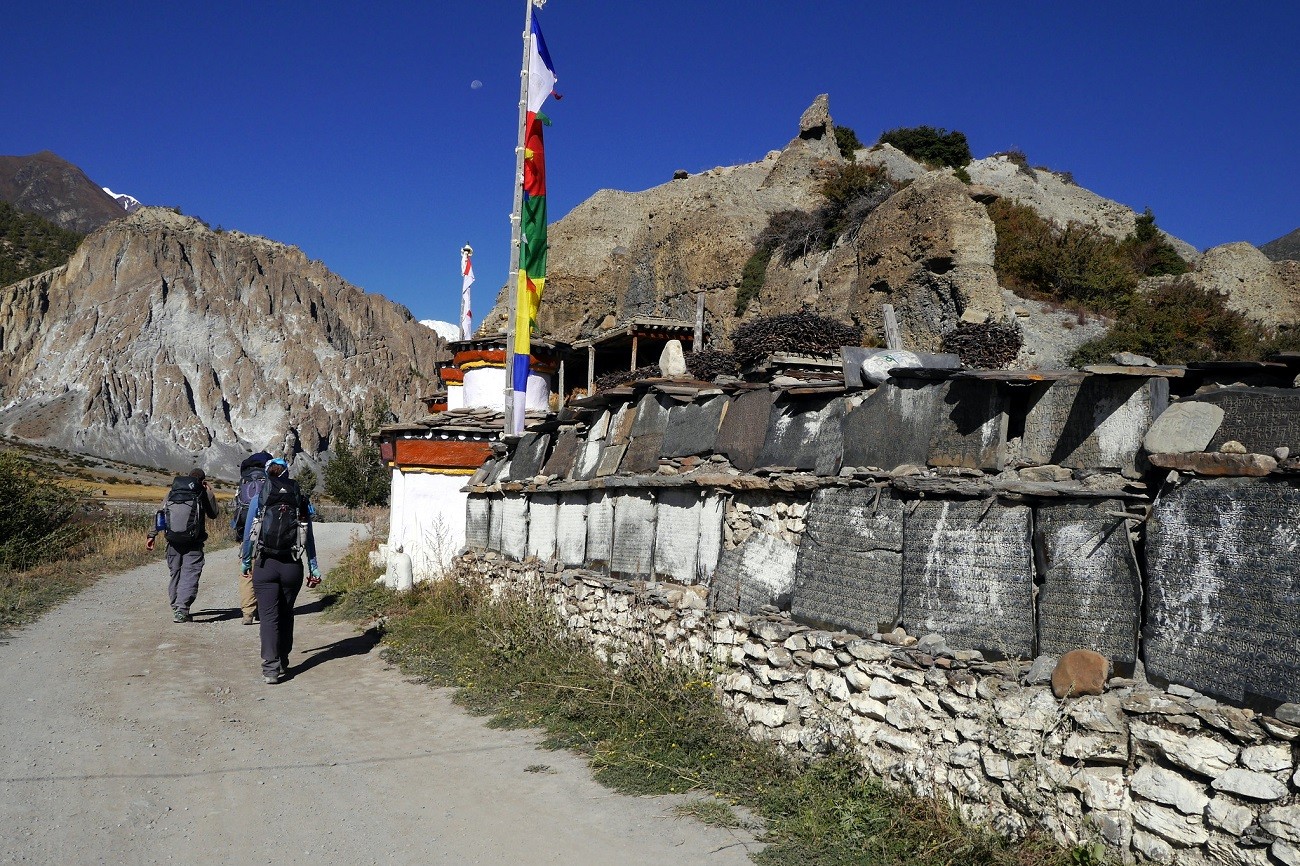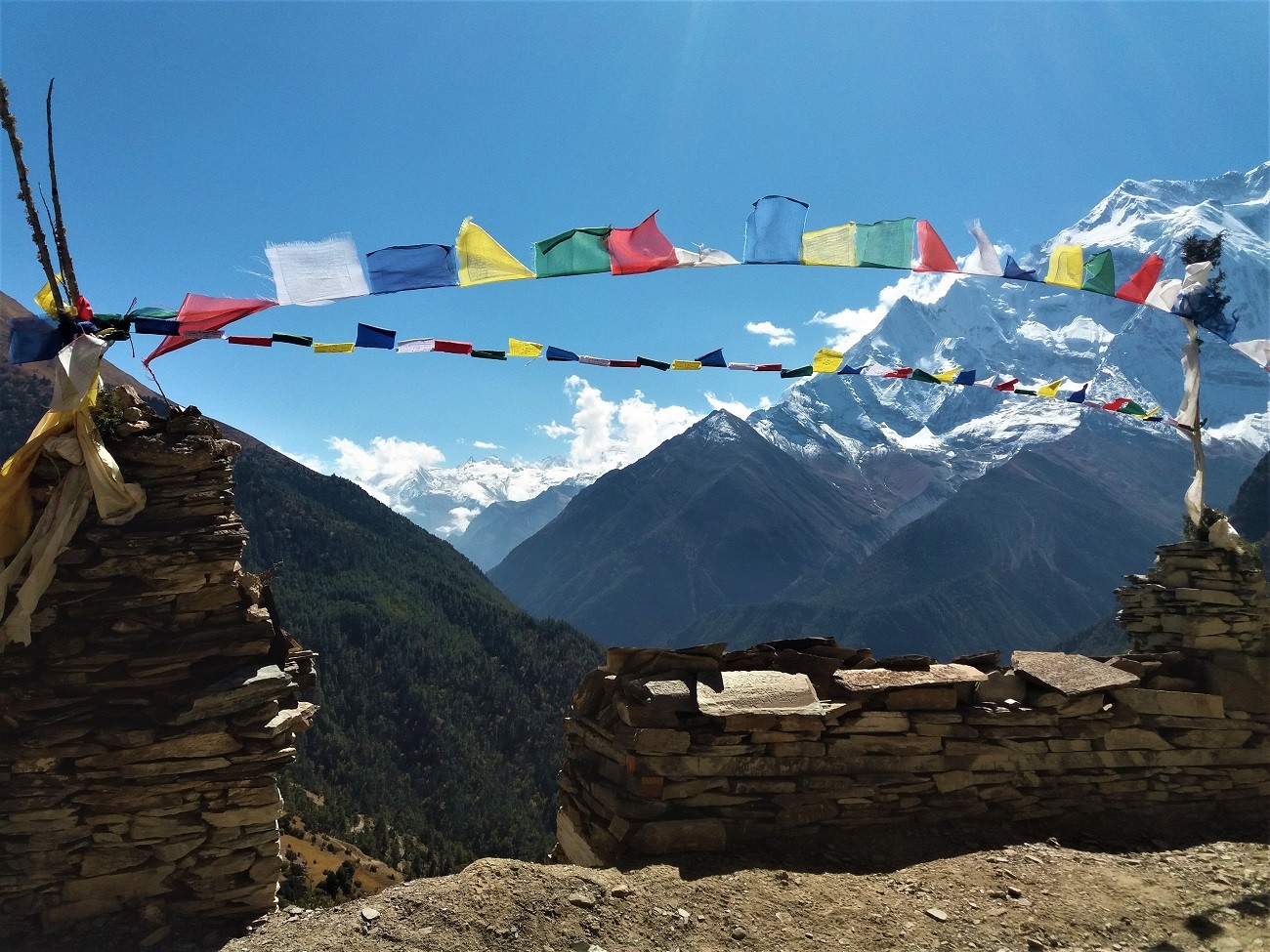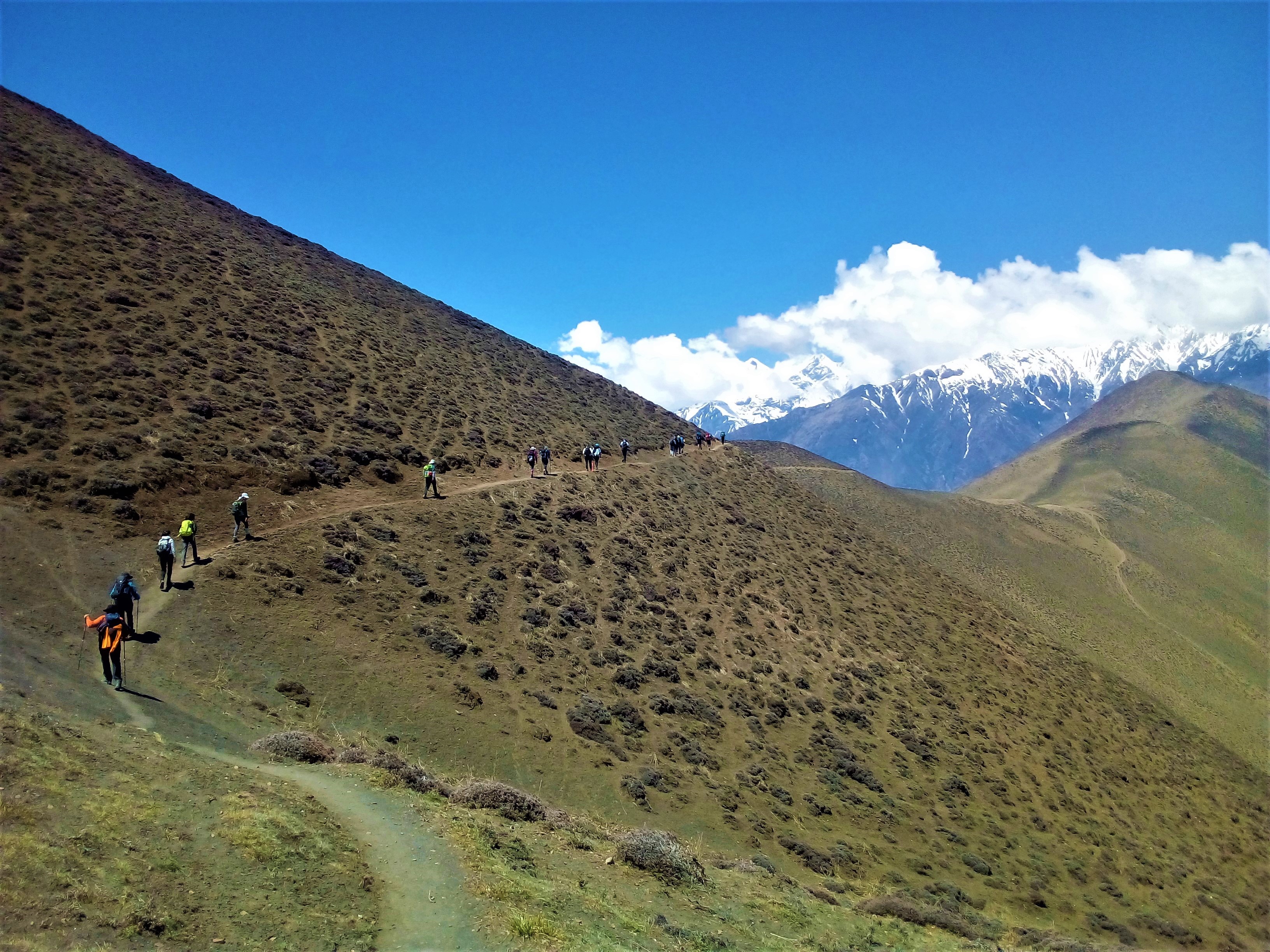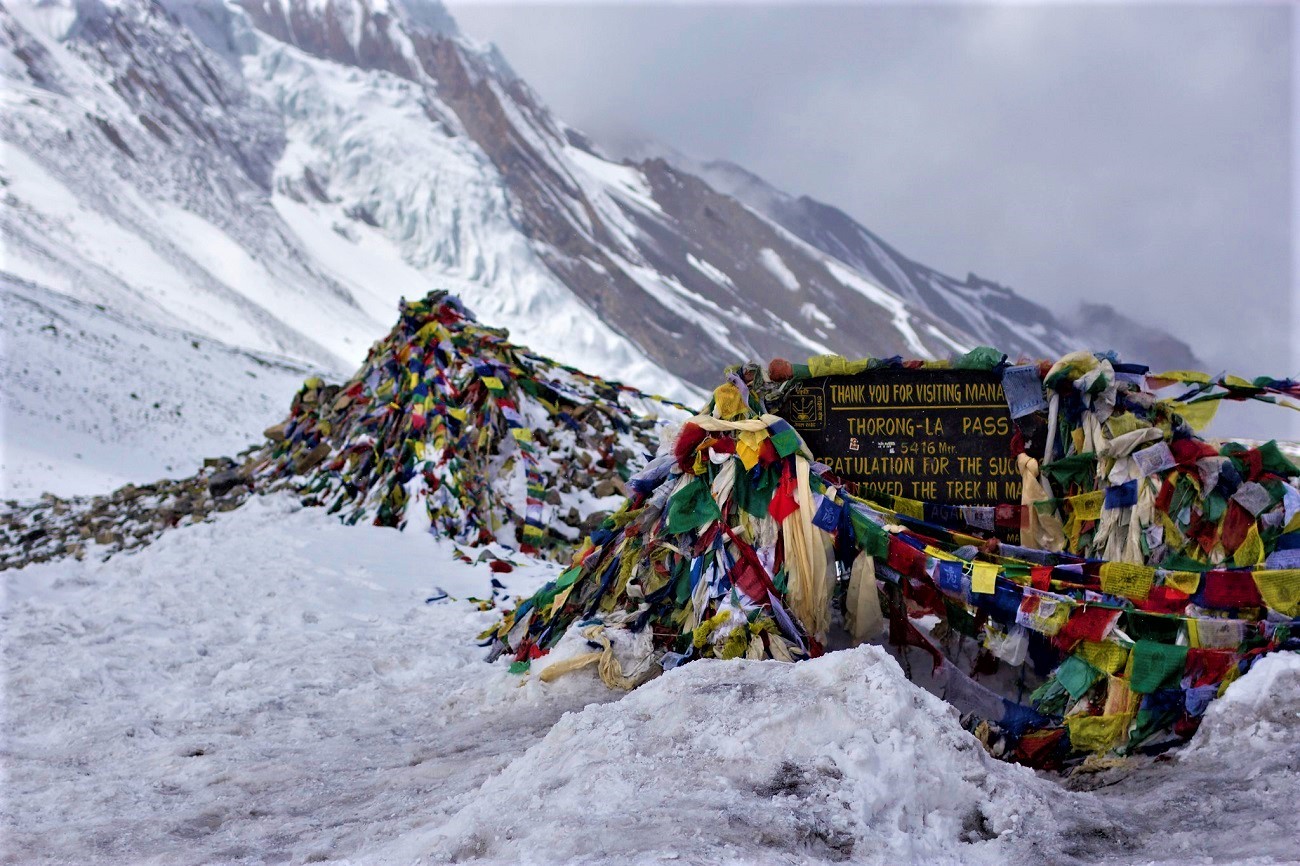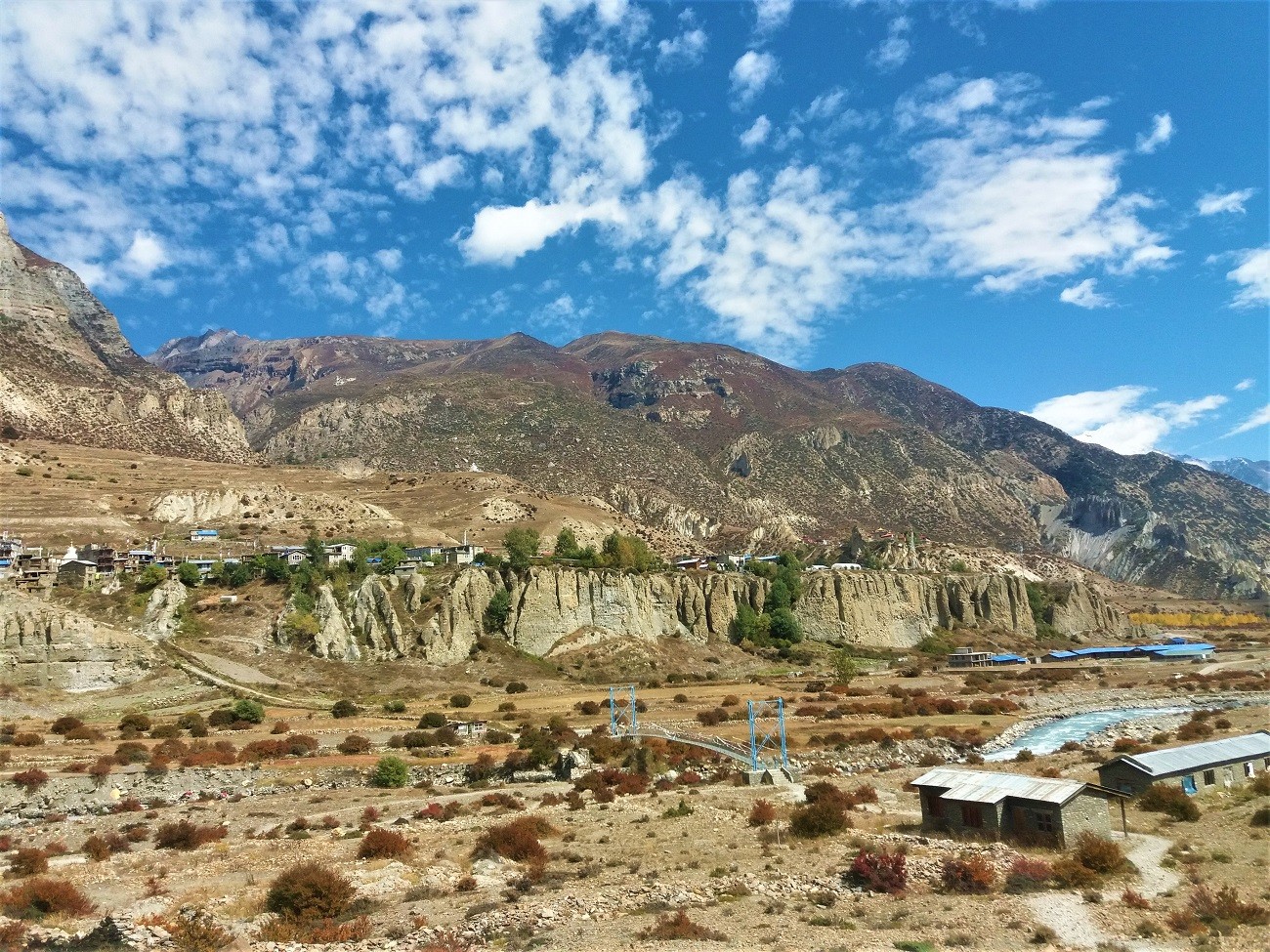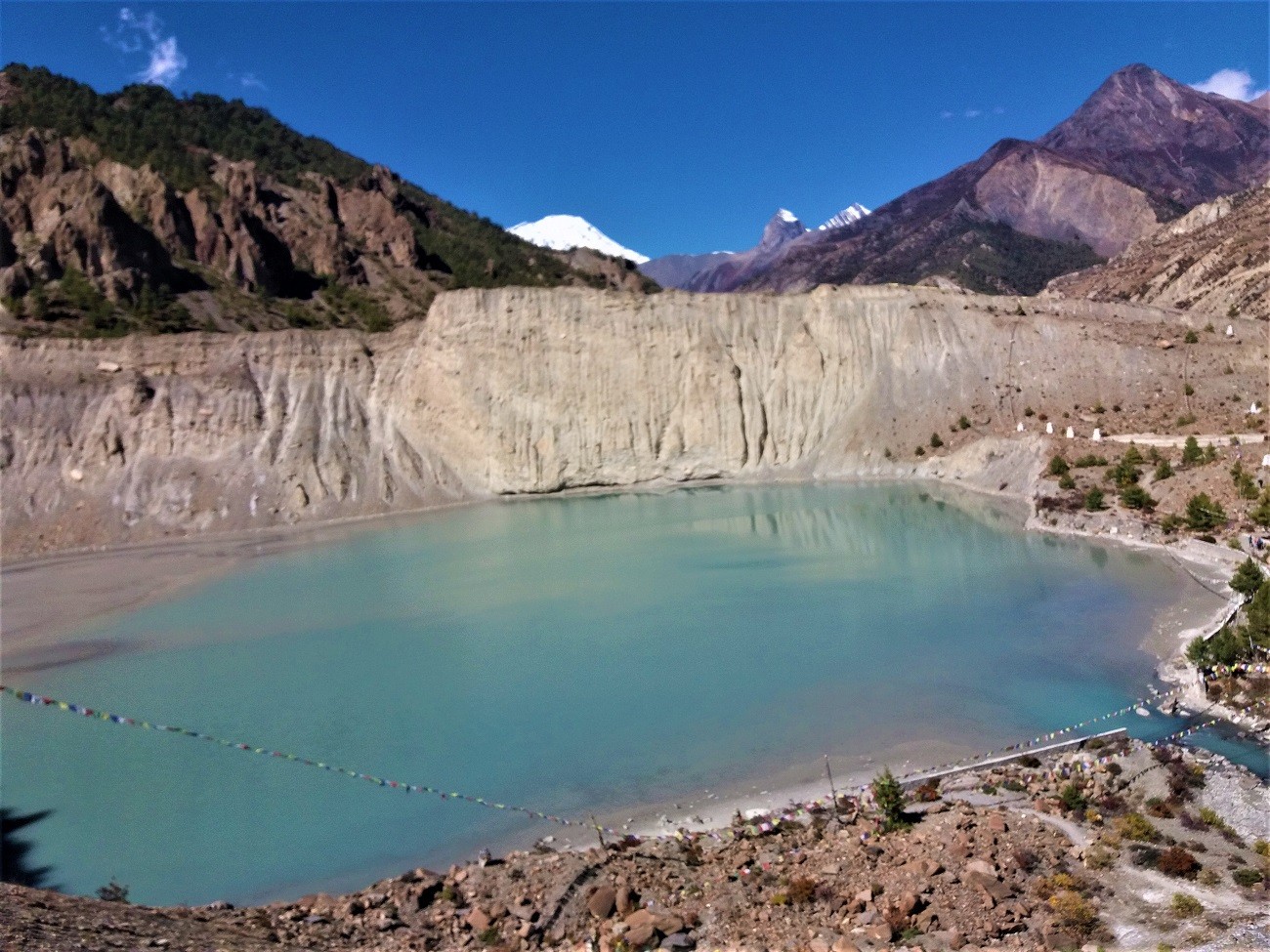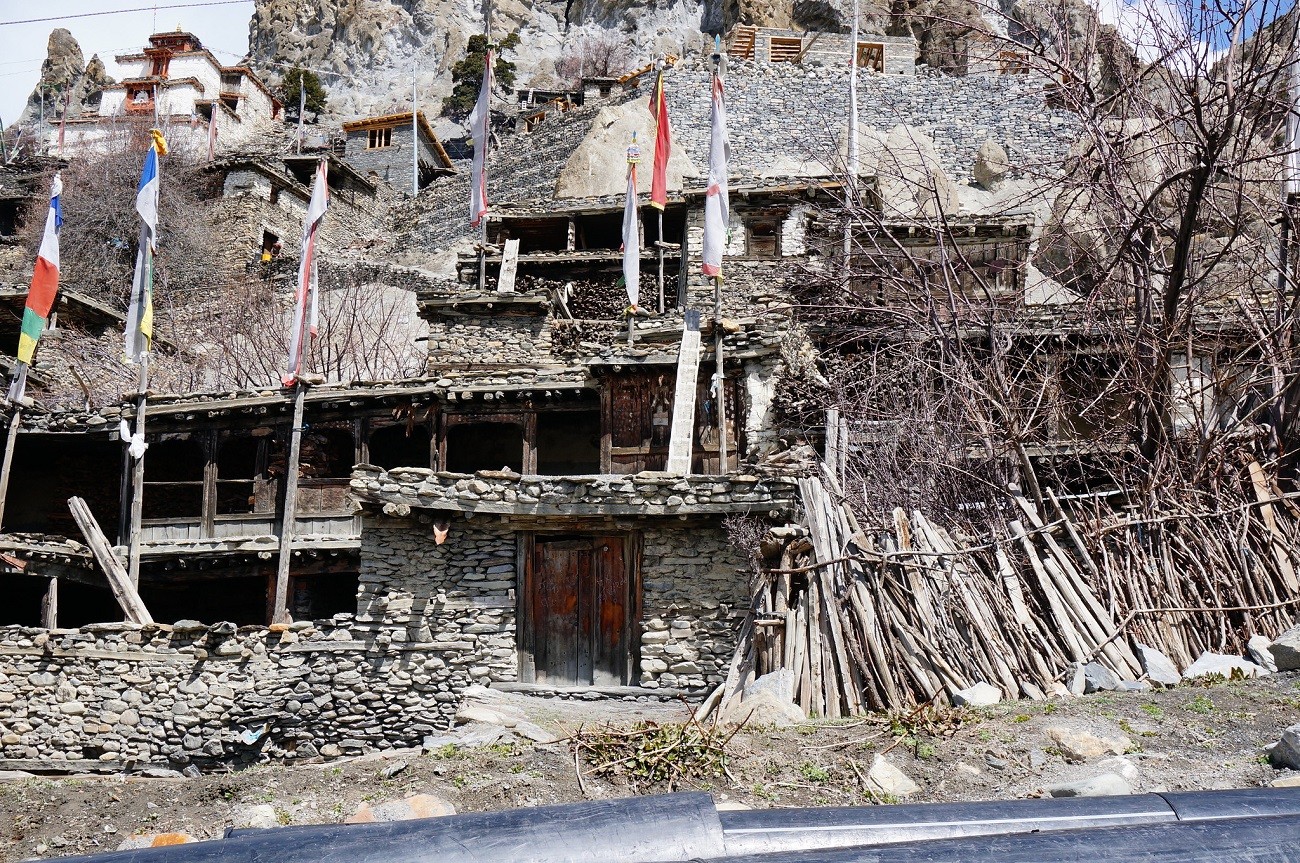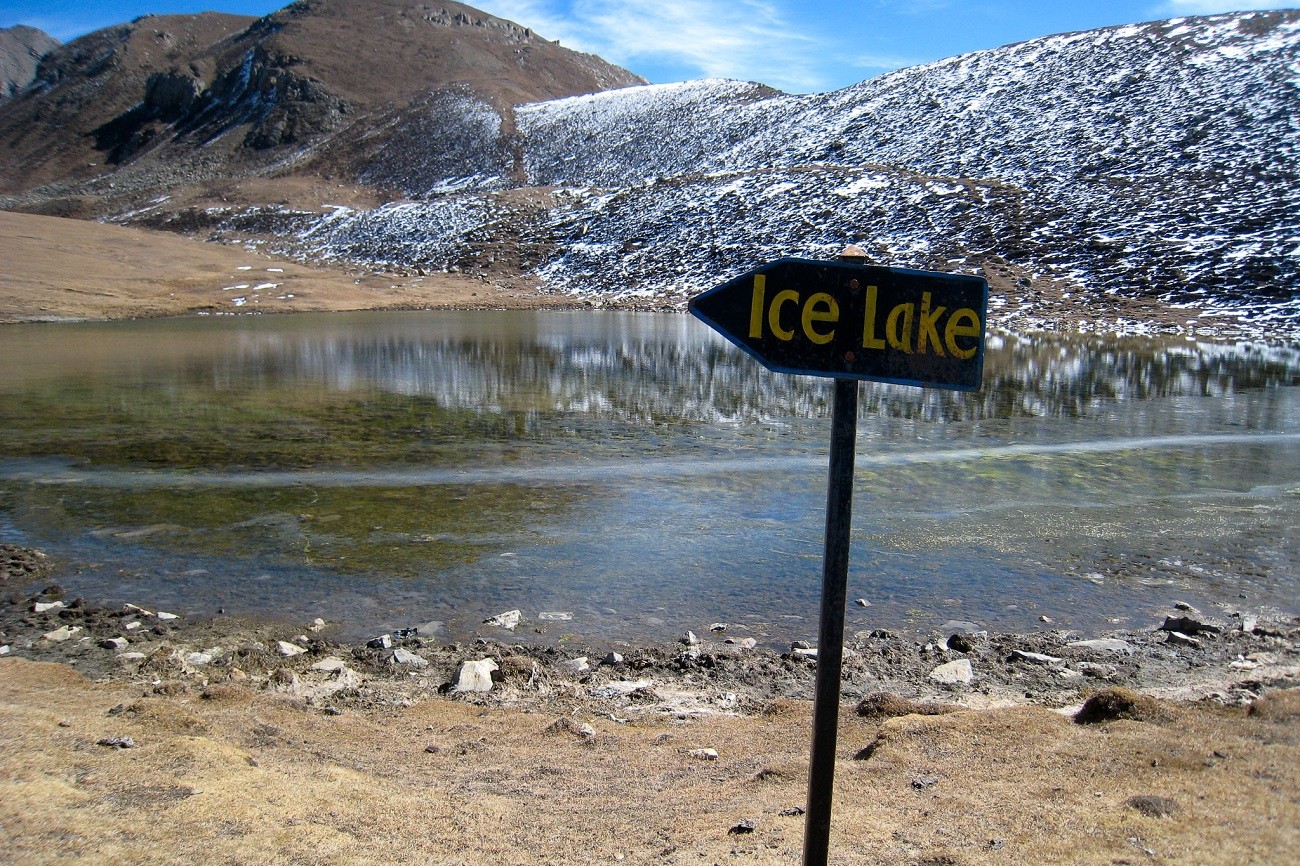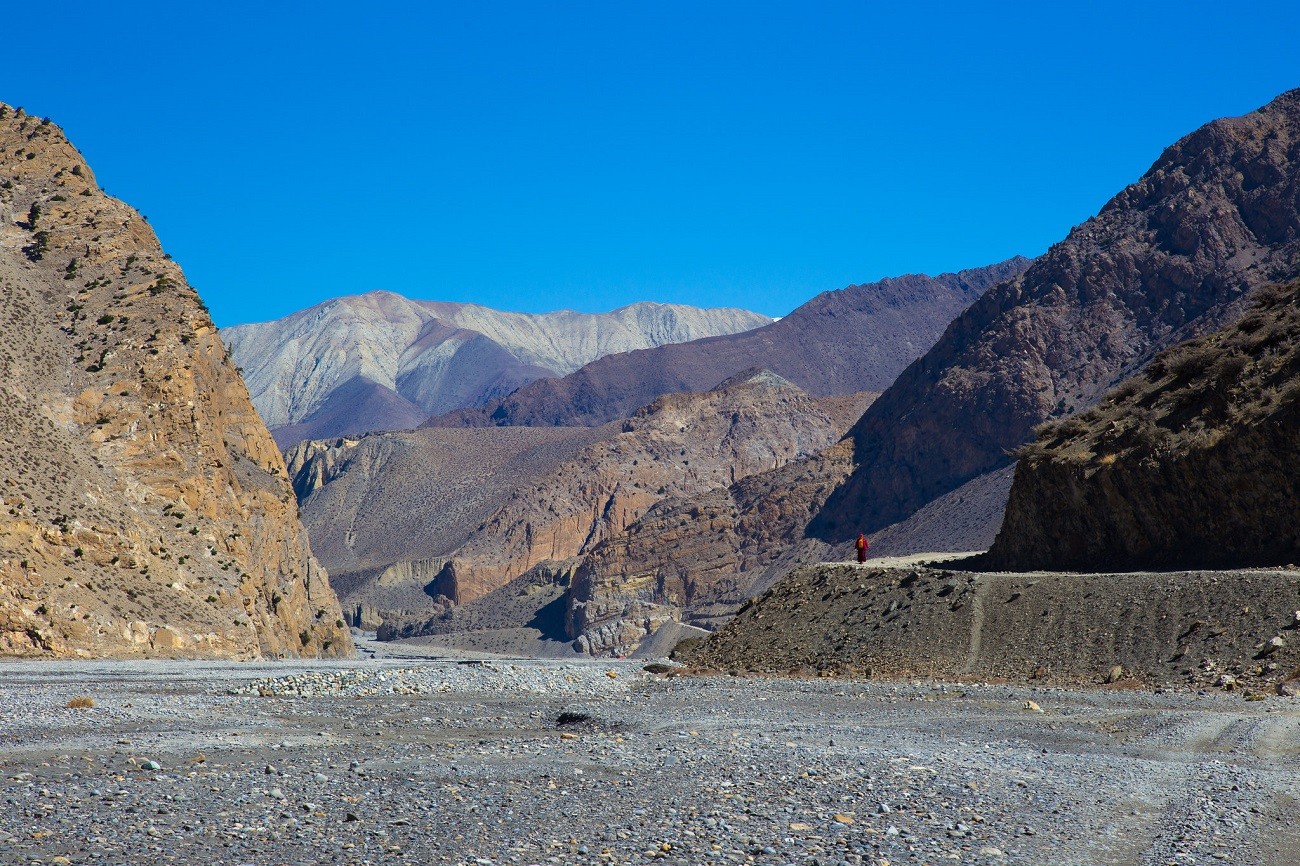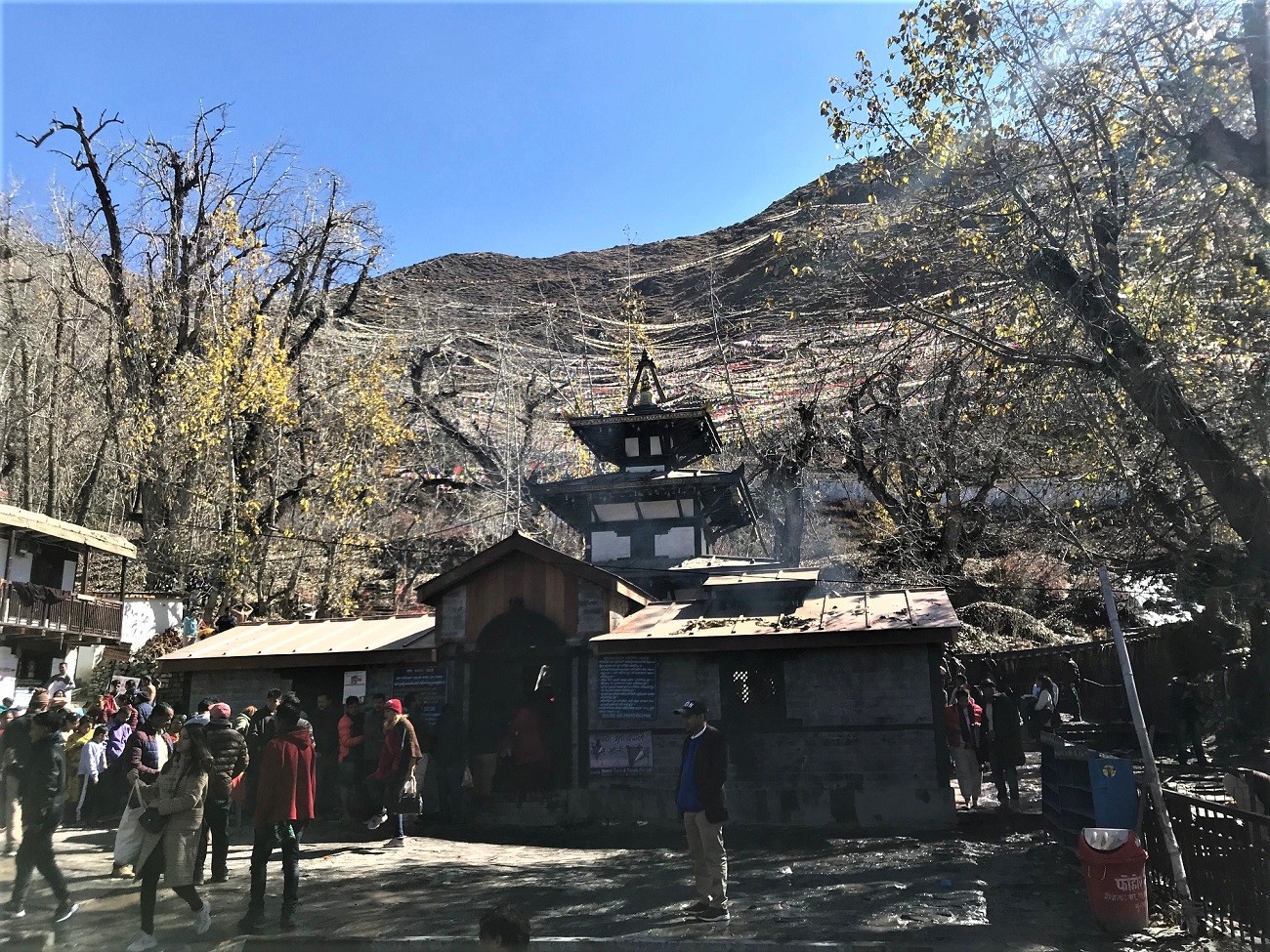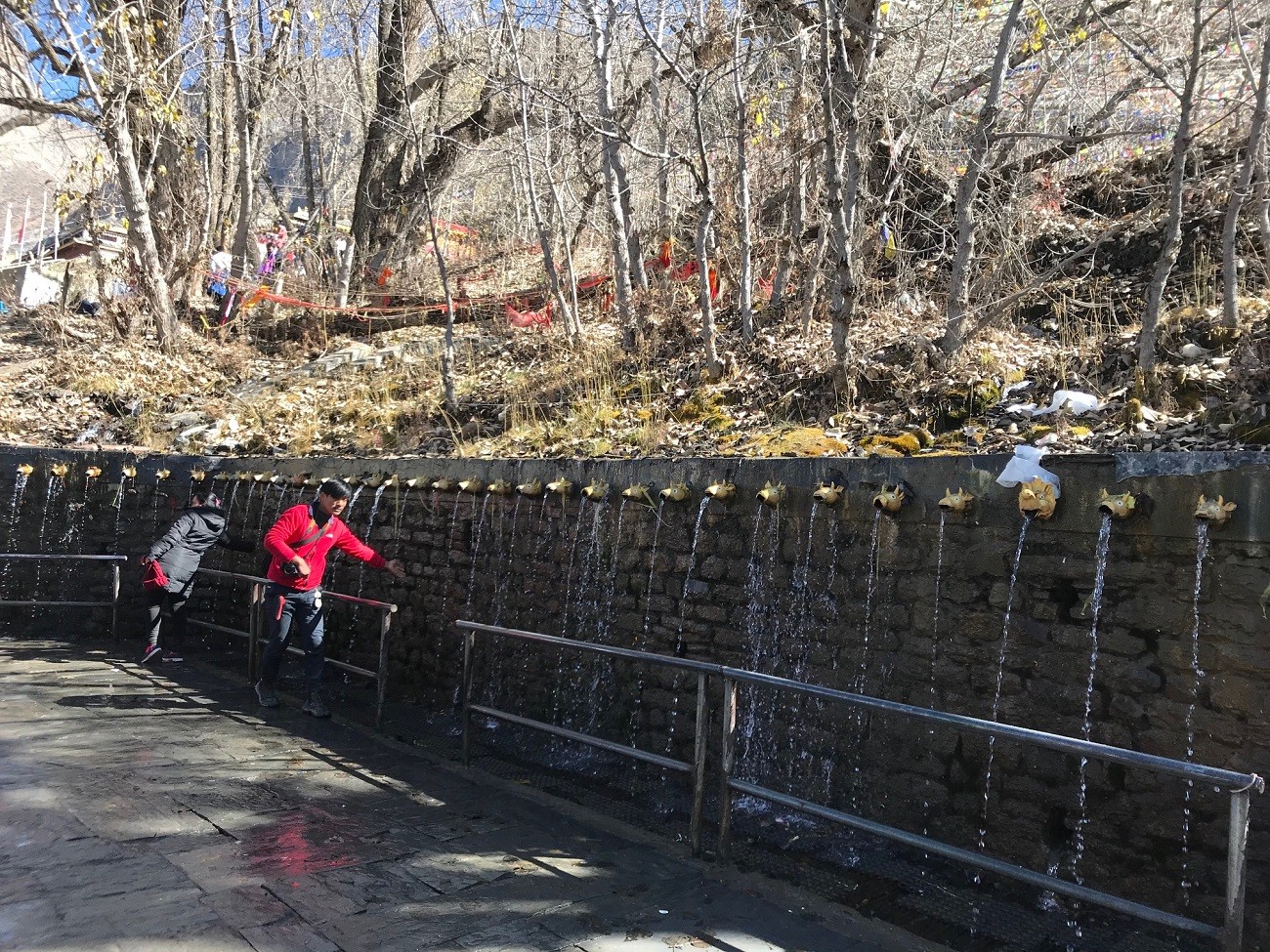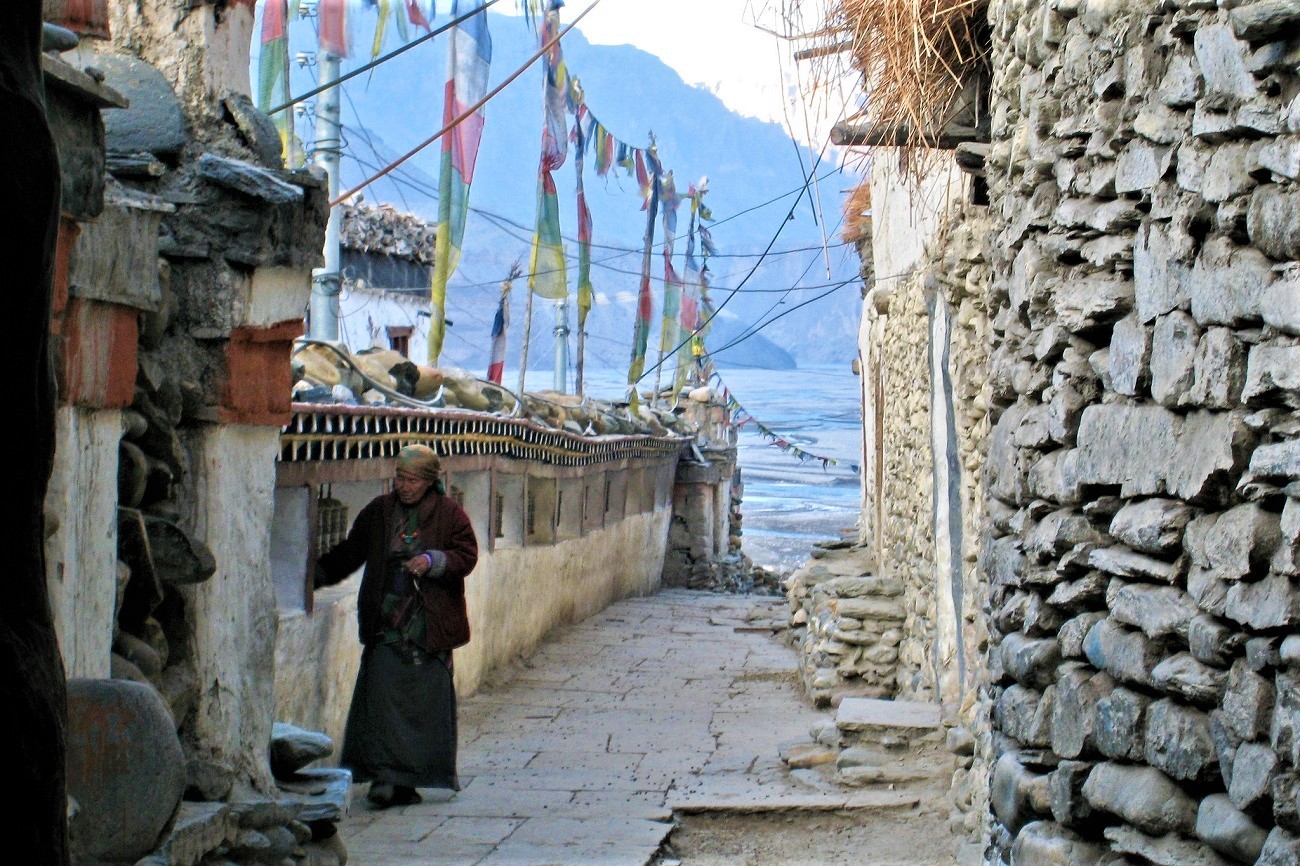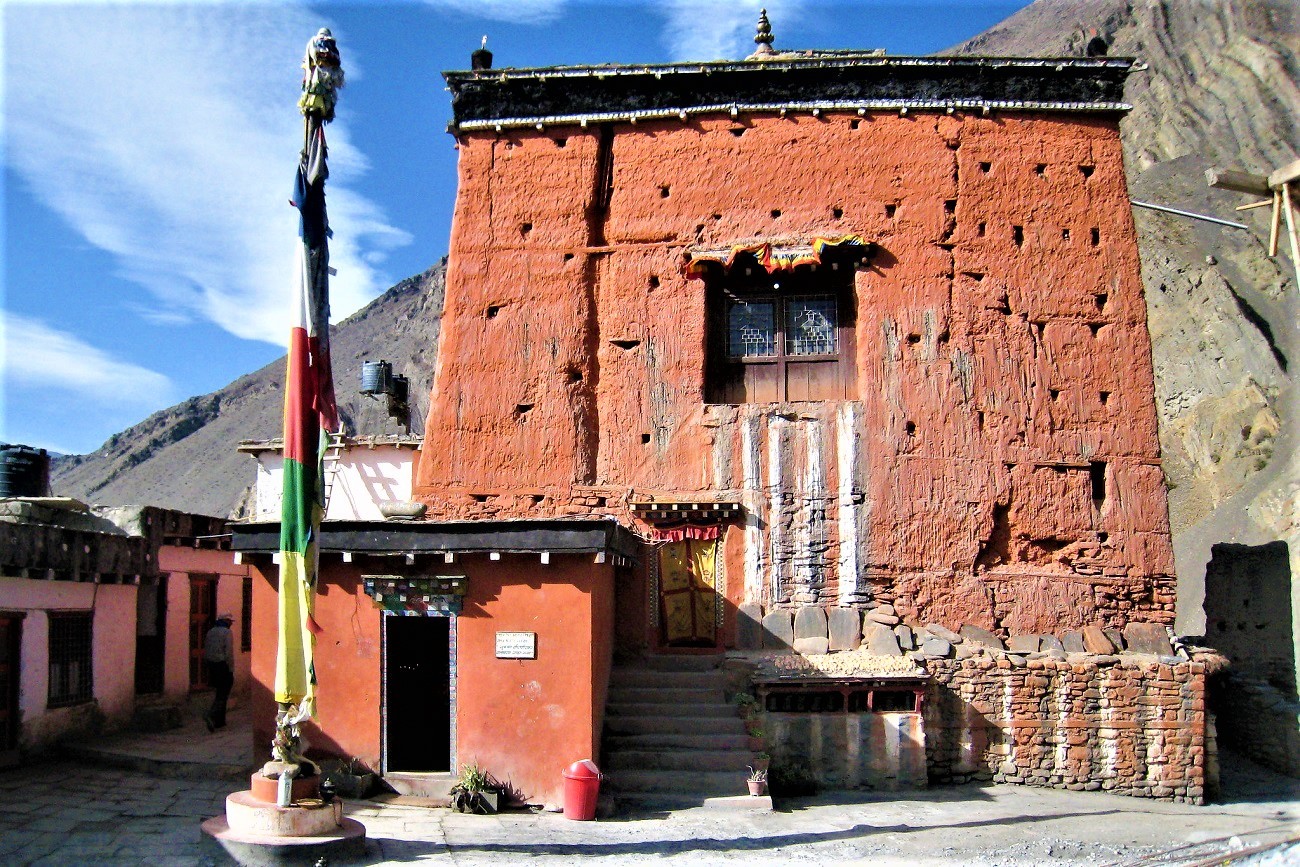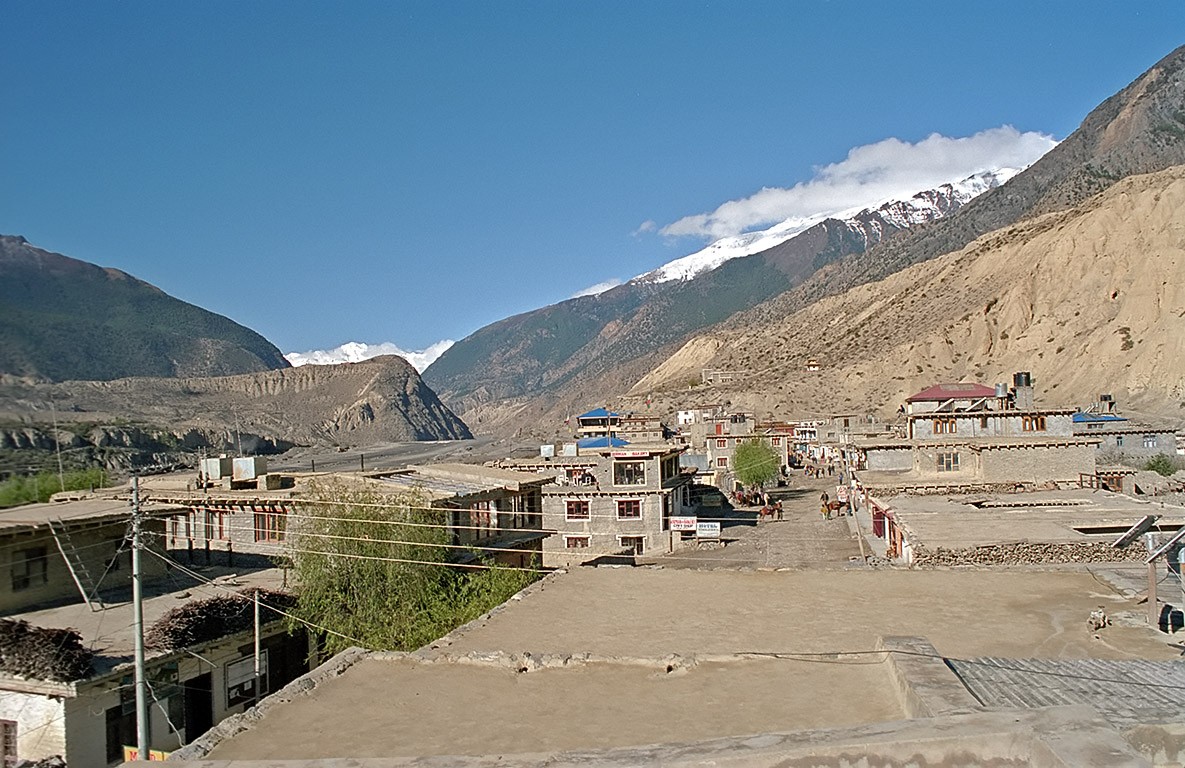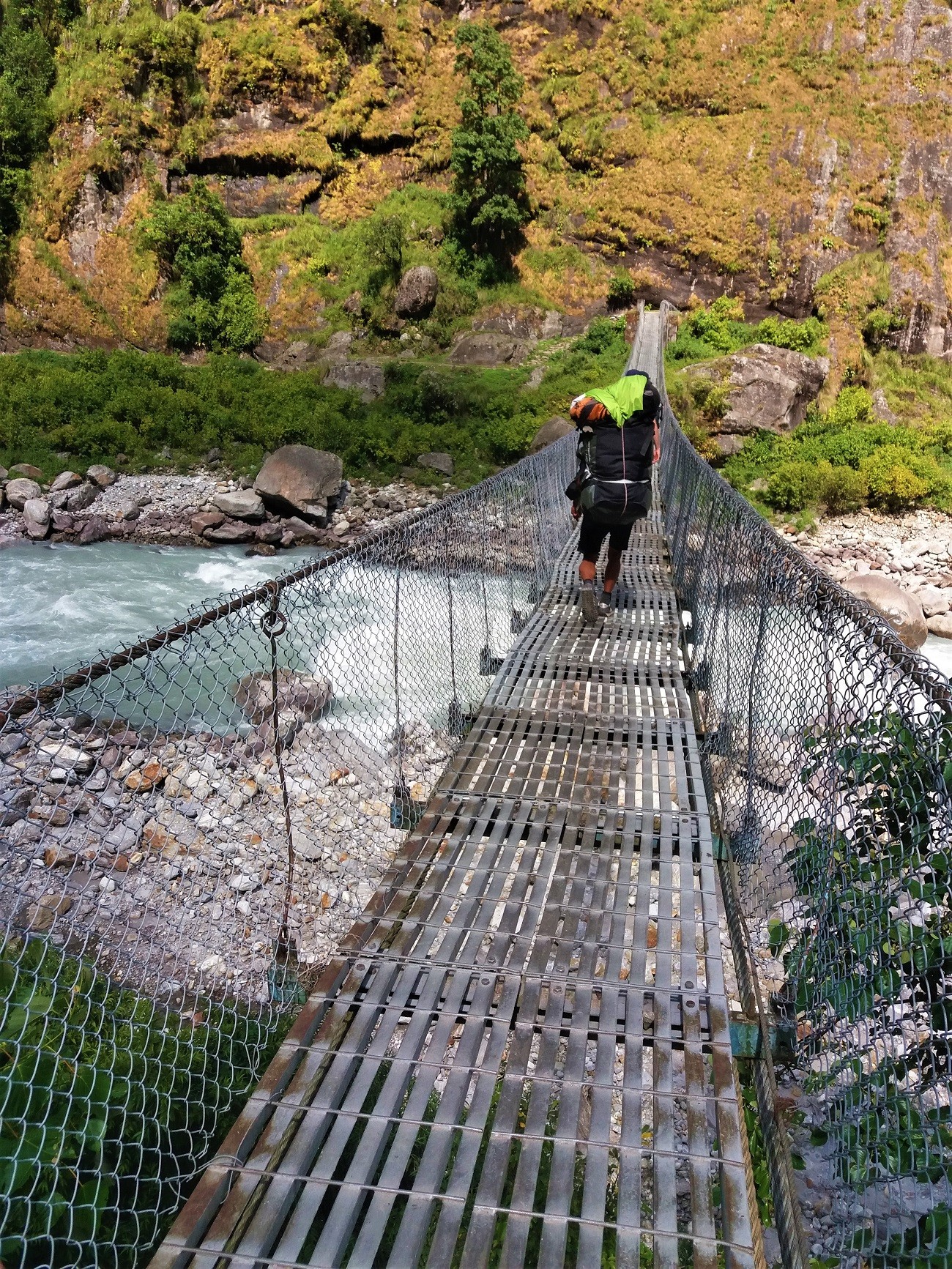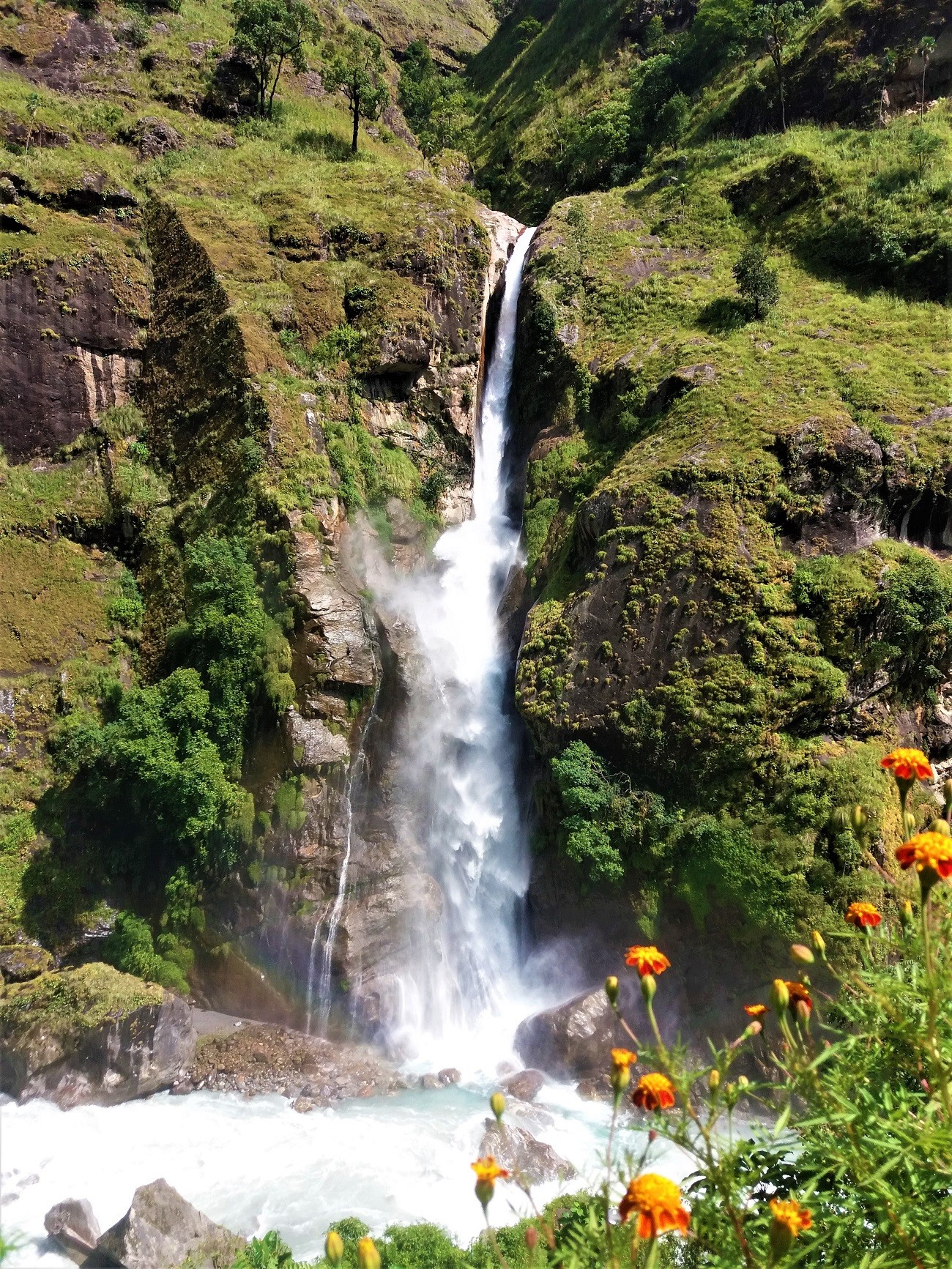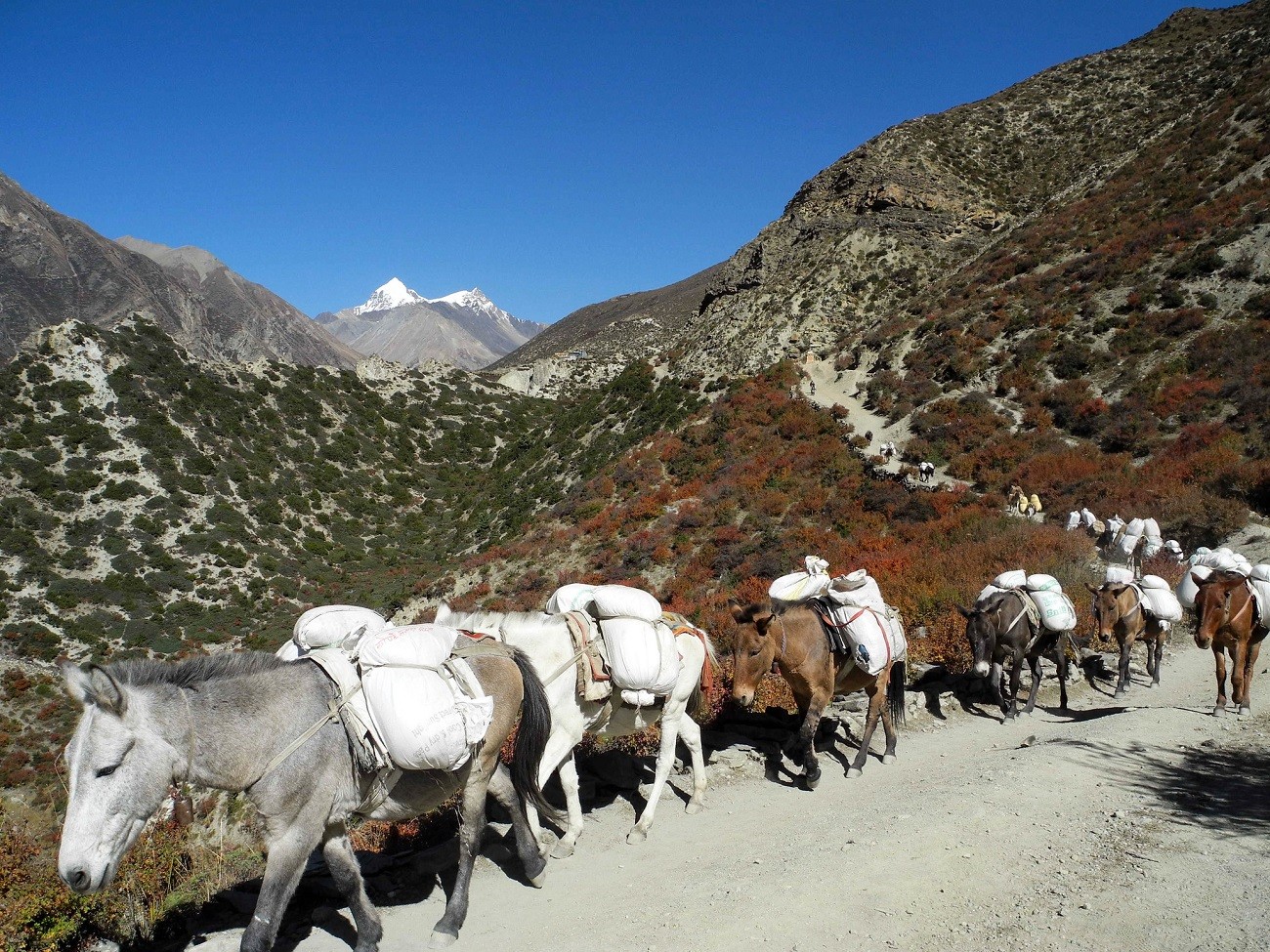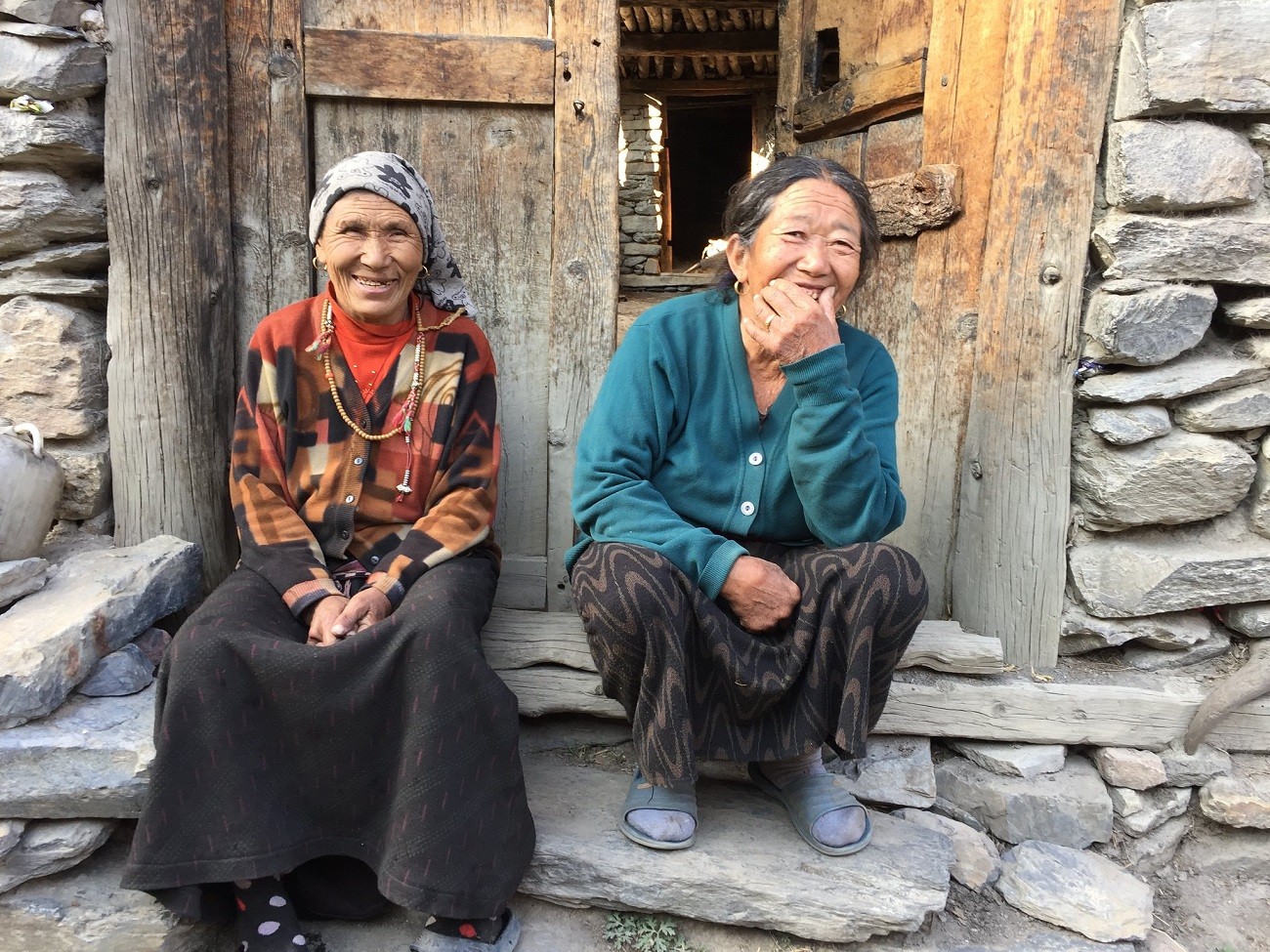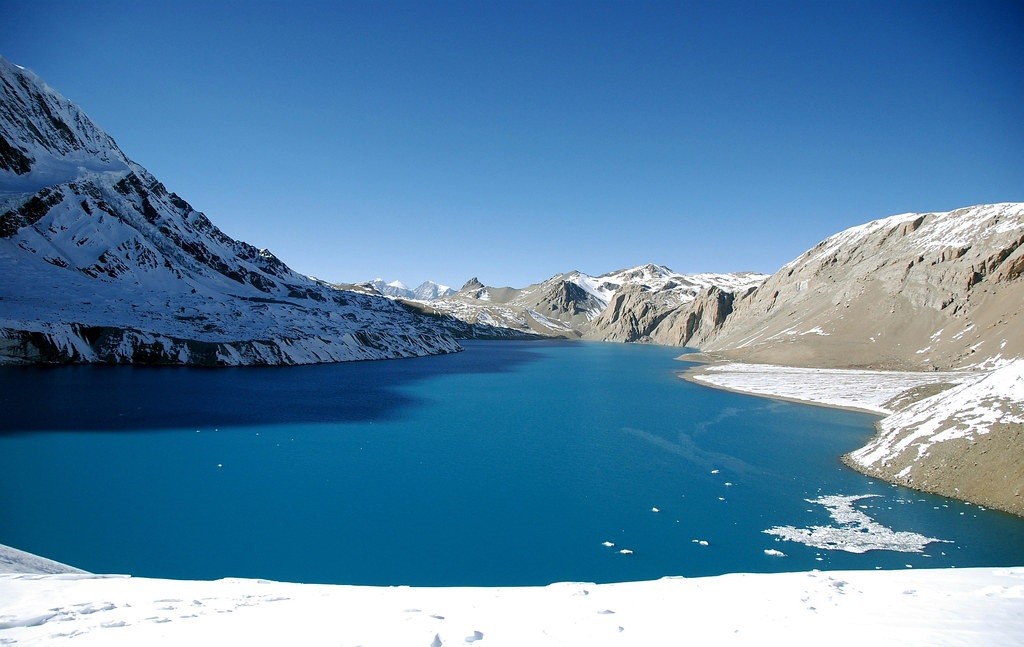As the name suggests, the Annapurna Circuit is a trail that circumnavigates the Annapurna massif. Further, Annapurna Circuit designated as one of the best long-distance treks in the world until half a decade ago. Spellbinding panoramic vistas and unbelievable experiences that lay on the Annapurna trial makes it one among the beautiful trekking trails in the globe.
Sanctified with the most almighty peaks, the trek offers close-up views of Annapurna II, III, IV, Lamjung, Dhaulagiri (8,167m), Manaslu, Machhapuchhre (6,993m), Tukuche peak, along with Gangapurna, Julu peak, Pisang peak, Mt Nilgiri and Tilicho peak.
The trek has gained high admiration among trekkers of Nepal since its opening in 1977 to foreigners. Annapurna circuit receives thousands of tourists annually. As stated by Annapurna Conservation Area-based Dharapani Check post of Manang, the trek route was visited by 28,534 tourists in 2018 in contrast to 27,068 tourists in 2017
NATTs (Natural Annapurna Trekking Trails)
As the construction of the road has been increasing to a greater extent in the Annapurna region, in 2011 ACAP (Annapurna Conservation Area Project) planned to design a new alternative trekking route in Annapurna, known as NATT (New Annapurna Trekking Trails). And finally, back in 2012 new waymarked routes are renamed as Natural Annapurna Trekking Trails (NATT). These trails signify the first-ever use of European-style waymarking in the Himalayas.
This project has transformed a lot since roads have replaced trails along an important part of the classical trek. The route encompasses the traditional circuit of the Annapurnas chain, Tilicho Lake, & Poon Hill, Annapurna Base camp trek and the new Khopra Community Trek and Mardi Himal trekking and Dhaulagiri’s incredible icefall.
Highlights of Annapurna Circuit Trek
1. Thorong La Pass
Thorong La Pass is the climax point on the entire 300 km Annapurna Circuit trek. The mountain pass is at an altitude of 5,416 meters above sea level in Damodar Himal which is obviously the most thrilling part of the trekking journey. The pass present trekkers with the soaking sight of the sprawling river valleys below and the tapestry of ivory Annapurna and Dhaulagiri snow-clad peaks that adorn the skyline.
Reaching the zenith of highest passes gives trekkers a sense of accomplishment. The pass itself nestled amid two 6,000 meters soaring peaks called Yakwakang and Thorong Peak, and greets trekkers with a traditional Chorten, fluttering vibrant prayer flags, and congratulation board.
Generally, its high difficulty of traversing pass is determined by its high elevation, long ascent, and descent rather than technical difficulty.
2. Manang
Manang is renowned to be an ideal place to stop on the Annapurna Circuit for acclimatization. Located at an altitude of 3,519 meters, there are plenty of options to kick back and enjoy an acclimatization day.
Gangapurna Lake
The glacial lake sited at the elevation of 3,540 meters formed from Mt Gangapurna (7,454m), Annapurna IV (7,525 m), Khangsar Kang and Glacier Dome. Gangapurna Lake looks like cyan throughout the spring and autumn, white during monsoon and blanketed with snow in winter. Due to its dramatic transformation, the Gangapurna Lake considered as the second most preferred trekkers attraction after Tilicho Lake
The trekkers can stroll for 15 minutes and reach marvelous Gangapurna Lake and Glacier. One can explore the local cultural heritage, culture, and tradition of the people living in this secluded region. The vistas over the village, the valley, and the snow-blanketed peaks are absolutely breathtaking.
Braga Monastery
If you want to witness the local cultural heritage, there are numerous gompas and monasteries in the smaller hamlets around Manang. The most prominent and one of the ancient in the region is the monastery in Braga, which is about 45 minutes’ stroll from Manang. The monastery perched on top of the Braga village. The main attraction of the monastery is the prayer hall and the big Buddha statue. The main prayer hall display many fine-looking thankas, masks, and religious objects. There are hundreds of Buddha figures lined up on the wall inside the monasteries.
The highlight of this monastery is a huge golden Buddha. Traditional chortens, mani walls and prayer wheels around the Braga village depict something about the intense spirituality of the locals up there. During October, the monks of the monastery travel to Kathmandu for teaching, and village dwellers look after the monastery.
Visiting the 100 rupee monk in Praken Gompa
Praken Gompa is secluded religious building hidden from sight in a mountain wall towering above Manang in height of 3945 m. The trip is a gradual ascent from Manang town, and the trail goes up the hillside from its eastern end. A few meters above Manang lies a stupa where a Buddhist monk (Lama) attained enlightenment, resides in Praken Gompa. The trekkers and visitors receive blessings from Lama for safe passage over Thorung La.
The views from this place are incredible as you can witness Annapurna IV, Annapurna II, Gangapurna and Tarke Kang. The round trip to Praken Gompa takes about three hours.
Hike to Ice lake- Kicho Tal
Located at the elevation of 4,600 m, the lake is often ice-covered except during the months from May to October when it converted into a crystal clear blue lake.
Trekkers can venture this hike either from Manang or Braga. It is one of the arduous side treks as trekkers ascend from 3,500 to 4,600 meters in four steep, long uphill sections. This glorious ice lake reached after an uphill hike above the yak meadow, picturesque villages with spectacular views of soaring peaks.
This makes it a perfect half-day destination for acclimatization. Trekkers get an opportunity to enjoy the marvelous and breathtaking views of the entire Annapurna and Tilicho ranges.
Marshyangdi and Kali Gandaki gorge
The Annapurna Circuit Trek takes trekkers to two river valleys connected by the Thorong La Mountain Pass. These river valleys take up northern-central Nepal and are sanctified with remarkable topographical aspects that trekkers can relish along the journey. The Annapurna circuit trek leads Marsyangdi River up to Manang valley and then climbs down to the valley of Kali Gandaki into a lower Mustang.
Kali Gandaki River cuts deeply between Mt. Dhaulagiri (8,167 m) to the west and Mt. Annapurna (8,091 m) to the east. This gorge is five times deeper than the Grand Canyon, making it the deepest gorge in the world.
Muktinath
Muktinath is one of the cultural attractions of the Annapurna Circuit Trekking that shelters the prominent holy temple. To Hindu devotees, Muktinath is a holy site of salvation. They consider that taking a holy bath removes the sin and they often take some holy water back home in bottles.
It has assumed that Hindu divine, Brahma, have lit the eternal flames that burn at Muktinath. Further, many ammonites called saligrams are found in the Mustang region. Saligrams are regarded as a real and direct manifestation of the Hindu god Vishnu itself. To Buddhists, Muktinath is a place where the great sage Guru Rinpoche (Padmasambhava) who brought Buddhism to Tibet, came to meditate.
The temple and its area are loaded with relics and architectural magnificence like the 108 water-fountain that are carved into the walls of the temple. People believed that taking a holy bath eradicate the sin and they often take some holy water back home in bottles.
Kagbeni
Kagbeni is an absolutely mystic place and no one should miss the opportunity to visit it. Situated at the confluence of the Jhong River and the Kal Gandaki River, you can see the old village center which looks rather like a fortress. Officially Kagbeni is a settlement that links the gap between Lower and Upper Mustang, right at the base of Muktinath Valley by the River Kali Gandaki.
In ancient times, Kagbeni used to be the main trading hub for Tibetans and Indians. The well-known Salt Trade Route among the two countries went right through the village. Thousands of caravans used to descend from the Tibetan plains and met the merchants from the plains of India with their supplies and goats
Visiting Kagbeni, one will feel like being in a medieval village as you pass through the cobbled streets and tunnels between the old mud houses. The most prominent landmark of Kagbeni is Kag Chode Thupten Samphel Ling Monastery or, the Red Monastery built-in 1429.
Tiri Village
About 30 -45 minutes north of Kagbeni is a little village of Tiri (2,800m) that lies on the western bank of the Kali Gandaki. It is home to an 800-year-old nunnery. This place was not allowed to foreigners as lately as 2007 since the village is part of the upper Mustang and therefore it was in the restricted area and access was forbidden. Now those trekkers are permitted to visit there during the day time.
To get to Tiri, we have to traverse the bridge in Kagbeni following the only path north, towards the green terraced farmland in the distance strolling the off the beaten trails.
From the small village of Tiri, the trekkers can take the steep trail up to a monastery with grand views of the Kali Gandaki, the bare stony hills, the snow-capped Himalayan peaks and Upper Mustang in the distance. Along the trail, you can notice the color pattern of the Buddhist chortens in Mustang–white, red and blue-gray. These colors are unique to the area.
Lhungfu Cave
The trekkers can take a side trip to Lhungfu Cave, a holy site for Buddhists. This cave is a frequent destination for pilgrims of various places. Located near Phalyak and Dhakarjhong village, Lhungfu cave is about two and a half hours stroll from Kagbeni.
Local people believed that during summer the deity lives in a cave and throughout the winter in Gurusangbo Cave near Kobang. Many Buddhist devotees visit the cave annually and worship for rain. Further, Padmasambhava (Guru Rinpoche) is said to have meditated in this cave.
Jomsom
Jomsom is a renowned village that is often an overnights-stay destination for trekkers doing the Annapurna Circuit Trek. Located by the banks of the Kali Gandaki River, the village is notorious for its Shaligrams- fossilized stones that are thought to be the natural state of Lord Vishnu by the Hindu.
The name Jomsom originated from the Tibetan word “Dzong Sampa”, which translates to “New Fort”. King Thang Mig Chen of Thini established the fort to monitor the movement of people on the north-south trade route. The fort and the town were built near the trade route. The locals later called the place Dzong Sampa and gradually people visiting the place started to pronounce as “Jomsom”.
The soaring peaks of the Annapurna and the Nilgiri Peaks also form a picturesque backdrop to the village. The trekkers can trek following road less trail to Dumba Lake as well.
Dumba Lake
Dumba Lake is a sacred hidden lake among the rocky terrains and dotted pine trees. At a distance of around 5.5 kilometers from Jomsom, this crystal clear and serene lake is a picture-perfect day hike destination, while you are in Jomsom. It takes approximately two hours to reach the lake from Jomsom.
Trekkers can kick off the trek by getting Jomsom bus Park and traversing the wooden bridge there to reach the left side of the airstrip. There you’ll see a signboard indicating the way to Dhumba Lake/Thini Village. The first landmark of the trek will be Thini Village which is about 5 km from Jomsom. The next half kilometer trek will take to Dhumba Village and subsequently to Dhumba Lake.
Regarded as a holy place by Buddhists, the lake is decorated with prayer flags. The lake sited the base of Nilgiri Mountain and the crystal turquoise blue water reveals a mirror image of backdrops on the tranquil and cool breeze. Locals believed that the fish from the lake is never consumed. Some locals claim to visit here to pray for some kind of change in their lives for their betterment.
If the trekker wants to hike further then there is a monastery at a ridge over the lake. An additional stroll of 15 minutes leads to the monastery that provides a panoramic backdrop of the surroundings.
Diverse topographies feature
The entire circuit of Annapurna commenced in the sub-tropical forests below 800 m in elevation, passing through rice paddies, pine woodland, and Tibet-like rustic area from Manang and above on the northern slope of the Himalayas.
The trekkers traverse swinging suspension bridges over roaring gorges encircled by the eight-thousander peaks; pass deep green terraced rice fields, a cascading waterfall along the trek. The trekkers get to see the narrow stone villages filled with playing kids and in the Buddhist monasteries, you can listen to the low hum of the meditating monks.
And above the elevation of 4,000m, you only witness mountains, rocky hills, glaciers, and snow. The views of Annapurna summits, the Gangapurna or the Dhaulagiri were hauntingly beautiful.
With a varied climatic difference and diverse biological biospheres dispersed throughout the valleys, trekkers can enjoy an innumerable of freezing alpine and sub-tropical forests that offer an incredible canopy.
The area is also home to rare species like Snow Leopards, Tibetan Argali, Musk Deer, Tibetan Wolf and six species of Himalayan pheasants.
Cozy Accommodation and authentic meals
There is a long practice of Nepali people trekking in the Himalaya, as it is very common for them to visit their family and relatives for numerous festivities. As the first roads were built in the 70 s, it was the norm for people to walk for days.
Several family-oriented tea-shops started to operate along the trails to provide meals and shelter to travelers. At these tea shops, one could get tea, traditional Nepalese meal and at night trekker could sleep on the floor, benches or some time is bed when available.
In recent days, the standard of tea house started to improve and on the Annapurna Circuit, the trekkers can find numerous nice lodges.
The tea house along the trail has a cozy and welcoming common area with a fire and good company to chat with. Wi-Fi is accessible, though it is spotty and unreliable, and once you’re higher than Manang, it’s almost non-existent.
One of the finest things about the Annapurna Circuit is the meals and hospitality trekkers will get in the tea houses. Every evening, after a long exhausting day, the host of teahouse welcomes the trekkers with their smile and hearty meals. The food is appetizing and very satisfying, and your body will be gratifying for it the following day when you feel revitalized and prepared to head out on the trail again.
Other common offerings in tea houses comprise garlic soup, a local cure for altitude sickness. Furthermore, apple pie is the famous Annapurna Circuit’s dessert since there are several villages with apple farms along the trail. Trekkers can find snicker bars and delicious bakeries in the Annapurna Circuit as well. Therefore, Annapurna Circuit entitled “The apple pie trek”.
Encounter with diverse People and culture
Besides sceneries and diverse climatic zones, the Annapurna Circuit trail is rich in its authentic Himalaya culture. The trek provides perfect opportunities to interact with diverse ethnic groups, their culture, and witness their lifestyles & livelihood.
The trail initiates in the lowlands, where Gurung Villages and farmland inhabit most of the trail, before going up into the infertile, arid Manang District, you’ll find settlements with a strong sense of Tibetan culture.
The richly varied trails take trekkers through layers of mesmerizing landscape and culture. The route winds from the subtropical Marsyangdi Valley where a majority of Gurungs and Thakalis reside, to the arid Tibetan Plateau, where prayer flags reveal its Buddhist heritage.
Interested to know more about Annapurna Circuit Trek?
Annapurna Circuit Side Treks
Nar Phu Valley
For those who have the time, Nar Phu Valley Trek is a distinctive version of the Annapurna Circuit which comprises the isolated valley of Nar Phu. The trekkers choose this side trek which will take to the ancient Tibetan style villages of Nar and Phu.
Nar Phu is a true hidden jewel situated between the well-known Annapurna and Manaslu regions. The trek that provides trekkers an exceptional chance to discover pristine valleys, unexploited Himalayan nature, and primeval Buddhist culture. The trails incorporate high passes, glaciers, high cliff, woodlands, rock formations, and Tibetan cultures.
After an exploration of the Nar Phu Valley, the journey lead to traverse over a picturesque Kang-La pass (5,306m/17,408 ft.). The trekkers reach back at the main Annapurna circuit route at Manang village. and beyond towards the highest pass Thorang-La at 5,416 m.
Want to combine Nar Phu and Annapurna Circuit Trek in your journey?
Tilicho Lake
Tilicho lake is the most thrilling side trip that can undertake during the Annapurna Circuit. Trekkers can add two to three nights for Tilicho Lake (4,920 m) trip.
During winter, the lake freezes and in the other seasons the lake is that unimpeachable blue. Tucked between Jomsom and Manang at an altitude of 4919 m, Tilicho Lake is a beautiful lake encircled by glaciers and landslides.
FAQ about Annapurna Circuit Trek
What trekking essential should I need to carry to the trek Annapurna Circuit?
- A pair of good hiking shoes or boots;
- Flip-flops for evenings;
- Warm socks
- Long pants;
- Waterproof pants
- Thermal pants;
- t-shirts;
- long sleeve thermals;
- warm fleece jacket;
- Face mask, buff
- Hat;
- Waterproof jacket.
- Backpack;
- Trekking poles;
- Sunglasses Water bottle;
- Sleeping bag
- Waterproof pouch for your valuables.
- Mobile and charger
- Camera gear
Toiletries and Accessories
- Personal hygiene essentials
- Sunscreen (SPF 50);
- Toothbrush and toothpaste;
- Nail clippers or scissors;
- Microfiber towel.
- Prescription medicine and first aid essentials
- Water purification tablets or Steripen
How far is Tilicho Lake from Manang?
The distance from Manang to Tilicho Lake is 19.7 kilometers / 12.2 miles. It is 2-3 days side trip of world-renowned Annapurna circuit trek.
Is the Annapurna Circuit dangerous?
Thorung La pass (5,416 m) is the hallmark and the highest point of Annapurna Circuit Trek. In the matter of altitude acclimatization is the safest to traverse the high passes and to complete the entire trek.
How long does it take to reach Annapurna Circuit?
Usually, the trek incorporates 15 to 20 days and is about 160 to 230 km in length. The duration of a trek depends on the exact starting and ending point,
Is it difficult?
The Annapurna Circuit trek does not encompass technical climbing. However, it would be great to possess some hiking experience. It is also advisable to join physical fitness training for at least a month prior to the trek.
The trek incorporates diverse topographies such as rocky terrain, several precipitous descents, narrow path, steep ascents, and stone steps. It is important to acclimatize the body as you ascent higher to prevent altitude sickness.
Can I join Annapurna Circuit Trek?
Anyone with a good level of fitness can embark on this trek. This trek is perfect for solo, school groups, and families with elder children. Altitude sickness is the main concern than fitness. Nevertheless, Nepal Sanctuary Treks design the itinerary incorporating with slow pacing and plenty of time for acclimatization and rest days.
Is it possible to tailor-made the Annapurna Circuit Trek?
Nepal Sanctuary Treks specialize in creating the customize itinerary as per need, time-frame, and preference of the trekkers. Depending on time, level of fitness and interest trekkers can undertake either half or full circuit.
Do I need a permit?
To venture the Annapurna Circuit the trekkers will require permits. The trekkers required to obtain Trekking Information Management System (TIMS) and the Annapurna Conservation Area Project. Nepal Sanctuary Treks is here to arrange all the permits and organize the memorable treks.
When is the best time to trek the Annapurna Circuit?
Most of the trekking in the Himalayas don’t undertake in the rainy season. However, the Annapurna circuit situated within a rain shadow which means trekking is possible all-year-round. This trek can undertake in the summer however the rainy season invites problems due to lots of blood-sucking leeches.
The ideal time for trekking the Annapurna Circuit is October-early December and Late February-April. The weather during December and January can be extremely cold. Therefore, the pass Thorung La can be impassable due to snow.

